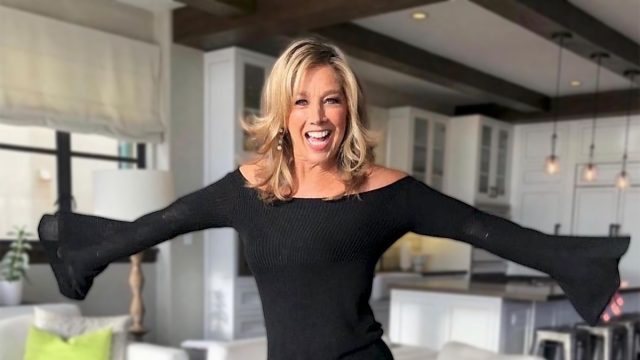Denise Austin Shares 3 Simple Exercises to "Lift and Tighten Your Booty"
Do you want a great booty? You are going to have to work out for it, says Denise Austin. The fitness pro, 67, has been training clients for several decades and has the body of a woman half her age, so clearly she knows a thing or two about glute work. In a new social media post she shares a few of her go-to exercises to achieve her perky booty. "Look great from behind!! Give these three squat variations a try," she writes in the Instagram post. "Here are three variations of a squat," she says in the clip, "to lift and tighten your booty."
Squat with Leg Left
The first one is a "squat with a leg lift," she says. "This is a great way to reshape your bottom half. Squeeze your buttocks! Look great from behind!" In the caption she adds that "this works your legs and will really lift the booty!"
Side Squat
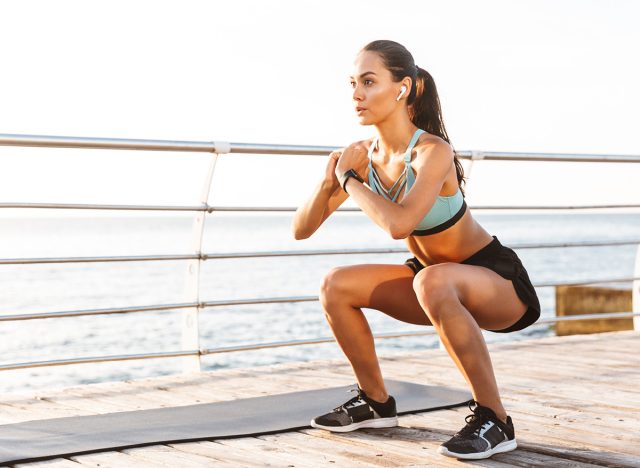
The second exercise is a side squat. "Move to the side and up. Work those legs and tone your booty," she says. "This one is great for what we call saddlebags, they will help to reshape your outer thighs," she adds in the caption.
Related: Fitness Expert Gabby Dawn Allen's Secrets to a Perfect Body
Plié Squat
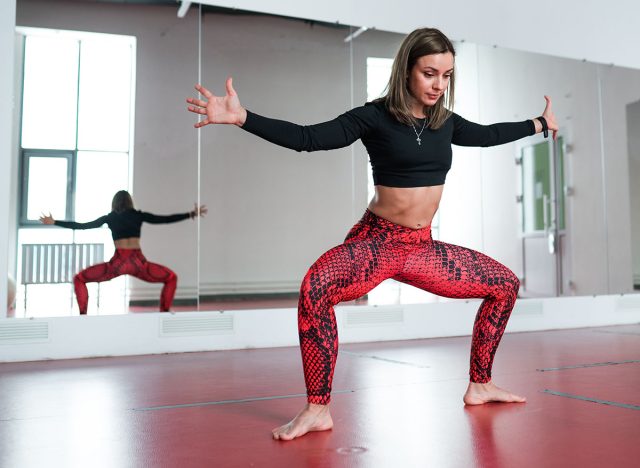
The third is a Plié squat. "Works your inner and outer thighs," she says. "If you are over 50 and have knee issues, just go halfway," she continues, reminding to "squeeze that buttocks. If you don't squeeze it, no one else will!"
Why Squats Are Good
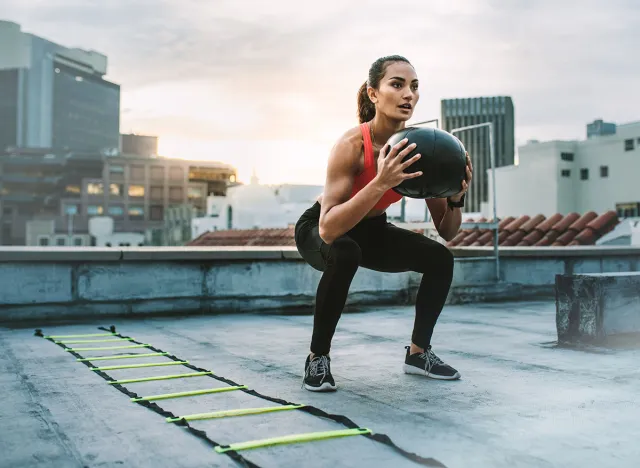
Squats in general are a great move to add to your routine with a "multitude of benefits," explains Kendra Gamble of HIT Fitness. They help "increase strength, size and power of quads (front part of legs), glutes (butt), hamstrings (back of legs), calves, adductors (inner thighs), tendons and ligaments, and lowers your chances of knee and ankle injuries."
Related: I Stopped Doing These 3 Things and Lost 40 Pounds
Studies Have Found They Are One of the Most Impactful Exercises
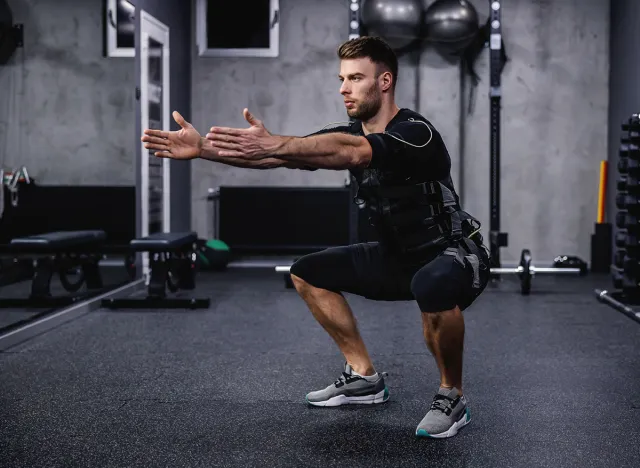
According to Harvard Health, squats "may be the most important exercise you do." A study published in 2017 in Annals of Internal Medicine found a direct correlation between time spent sitting and a higher risk of early death. One of the best exercises to counteract the damage of sitting for excessive periods of time? Squating.
💪🔥Body Booster: Adding squats to your routine can make a huge difference. Try doing three sets of 10 during every workout session to build your booty. And if you enjoyed this article, don't miss these 20 Superfoods for People Over 50.
